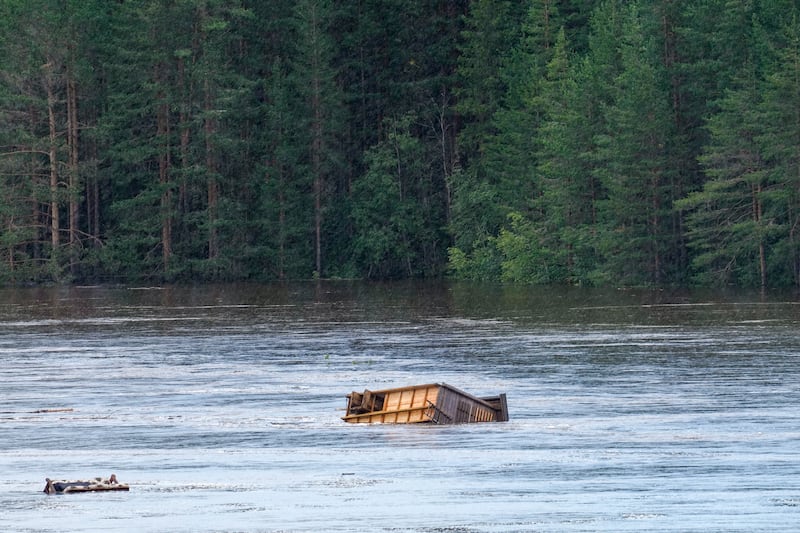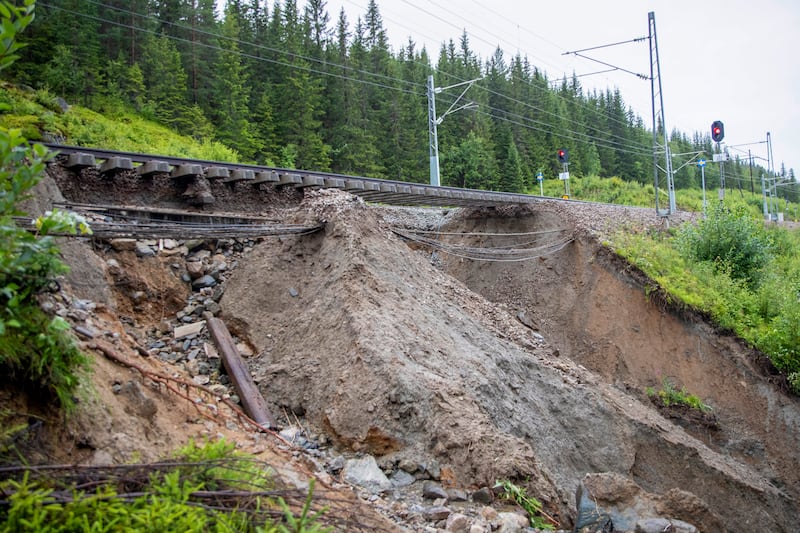Severe floods in China’s northern province of Hebei brought by remnants of Typhoon Doksuri this month killed at least 29 people and caused billions of dollars in economic losses, its provincial government said Friday.
Official news agency Xinhua reported that rescue crews were still searching for 16 missing people as of Thursday and the province’s reconstruction is expected to take two years to complete.
Initial estimates showed the province’s direct economic losses amounted to €12 billion, state media China News Service said.
Last week, Hebei was hit by serious flooding as the remnants of the typhoon battered the region and brought the heaviest rainfall in neighbouring Beijing in at least 140 years.
READ MORE
Official preliminary estimates announced Friday showed 3.9 million residents, or about 5 per cent of the province’s population, were being affected by the floods and more than 40,000 houses were collapsed, China News Service said.
A further 155,500 houses and other facilities that provided electricity and communications were seriously damaged, it added.
More than 1.75 million residents have been relocated.
Repairs to damaged power cables and other facilities were under way Friday.
According to Xinhua, the government has pledged to ensure affected residents can move back to their homes or have new homes before winter.
Earlier this week, officials said the death toll from recent flooding in Beijing rose to 33 and it could take up to three years to restore services completely, given the level of damage.
The Chinese government on Friday has further allocated €184 million of disaster relief funds to support flood-stricken regions, including Beijing and Tianjin, state media CCTV reported.
This brought the total amount of the relief funds to €975 million, it added.

Meanwhile, more evacuations are being considered in southeastern Norway, where the level of water in swollen rivers and lakes continues to grow after days of torrential rain.
Huge amounts of water, littered with broken trees, debris and trash, were thundering down the usually serene rivers. It flooded abandoned houses, left cars coated in mud and swamped camping sites.
One of the worst-affected places was the town of Hønefossen where the Begna river had burst its banks and authorities were considering moving more people downstream amid fears of landslides.
Up to 2,000 people have already been evacuated.
[ Norwegians prepare for more flooding and landslides after days of heavy rainOpens in new window ]
“We constantly try to think a few steps ahead. We are ready to press an even bigger red button,” Magnus Nilholm, a local emergency manager in the Hønefossen region, told Norwegian broadcaster NRK.
Ivar Berthling of Norway’s water resources and energy directorate (NVE) told Norwegian news agency NTB that the water levels around Hønefossen, some 40km north of Oslo, were expected to continue rising and remain high until at least Monday.
Up north, near the Strondafjorden lake, the water level was reported to be 8.2ft above normal.
“We are still facing critical days,” the Ringerike municipality, where Hønefossen lies, said in a statement.
Prime minister Jonas Gahr Store was to visit Hønefossen later on Friday while King Harald and Queen Sonja will visit the headquarters of the NVE.

Authorities did not provide a nationwide count of evacuees. According to a rough estimate, damage could so far amount to nearly €87 million.
People have been urged not to check on their cabins in the devastated part of the country.
“Hytte”, the Norwegian word for cabin, is part of the Scandinavian country’s outdoors lifestyle, and thousands of Norwegians have access to a cabin – some in the mountains, others by the coast – that they use as a retreat from everyday life.
“We fully understand that many cabin owners are anxious about the cabin’s condition after the ravages of the extreme weather, but we hope people will abstain now from making the trip just to check,” Lars Aune of the national police said in a statement. “This is to avoid unnecessary strain on exposed roads.”
Storm Hans battered northern Europe earlier this week, leading to transportation disruption, flooding and power cuts across the Nordic and Baltic region. At least three people were killed.
Southeastern Norway was particularly badly affected. A hydroelectric river dam collapsed on Wednesday as water forced its way through, and earlier this week a train derailed in neighbouring Sweden when a railway embankment was washed away by floods. – AP/PA













